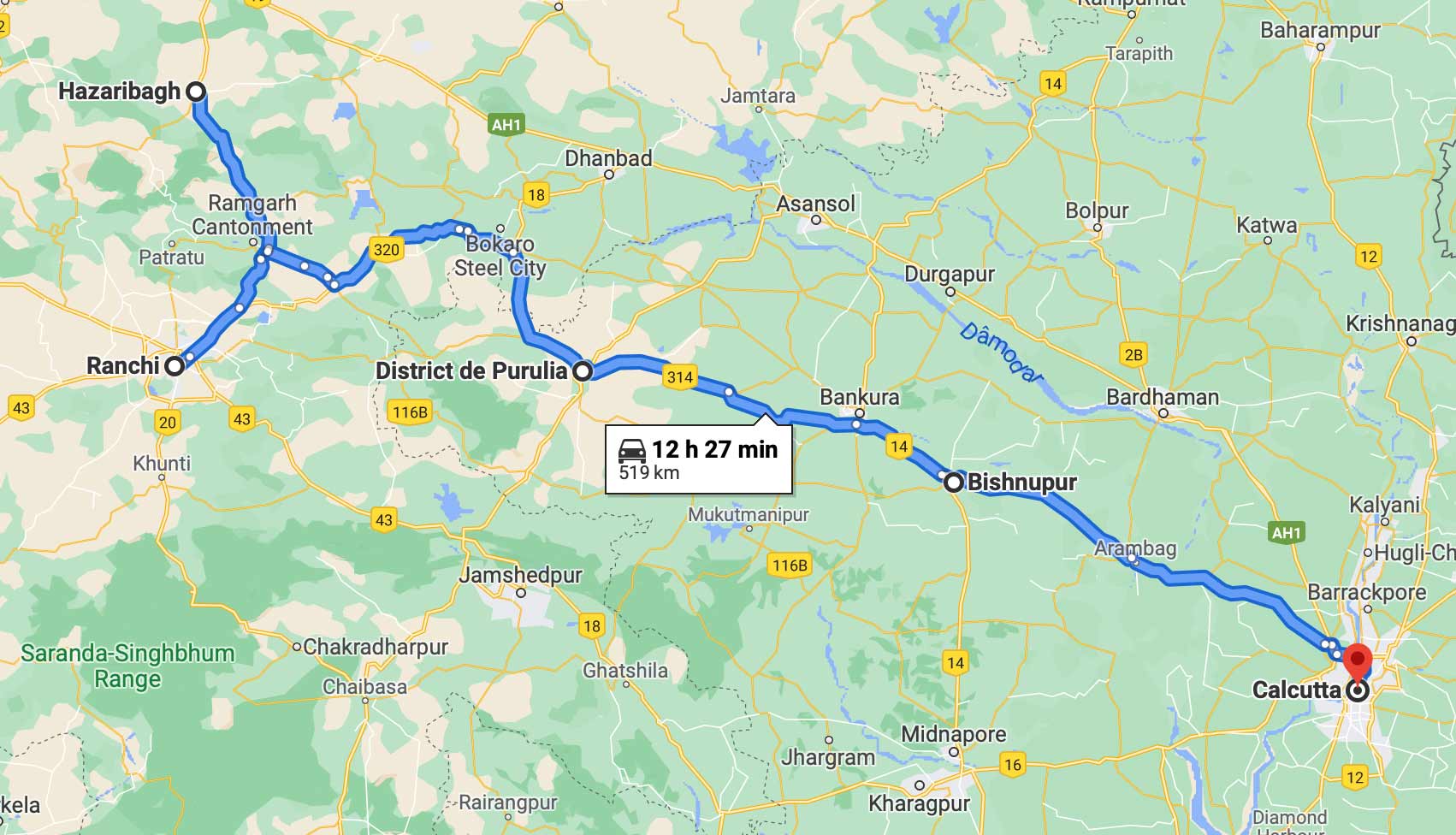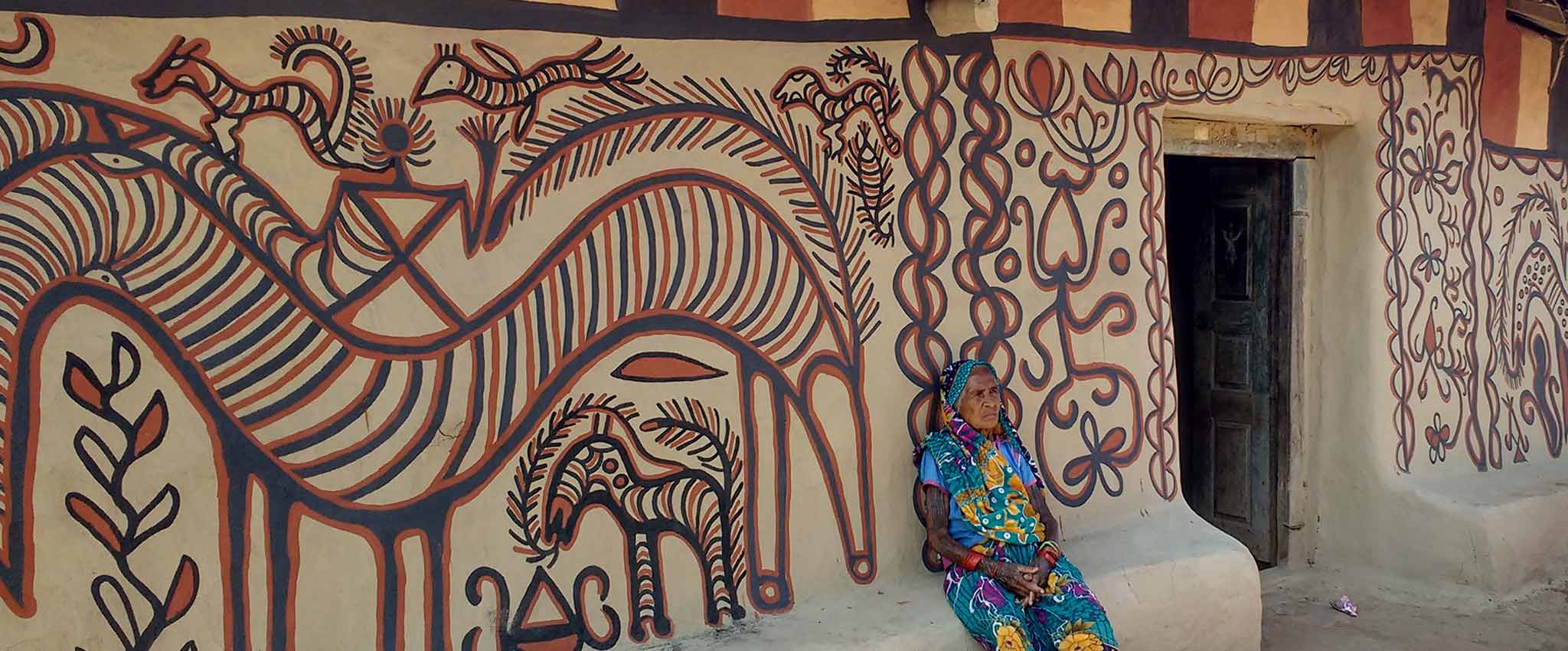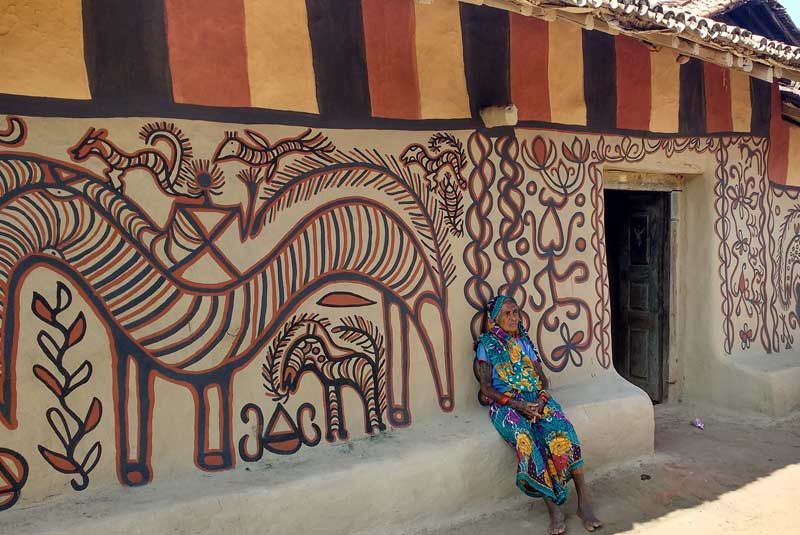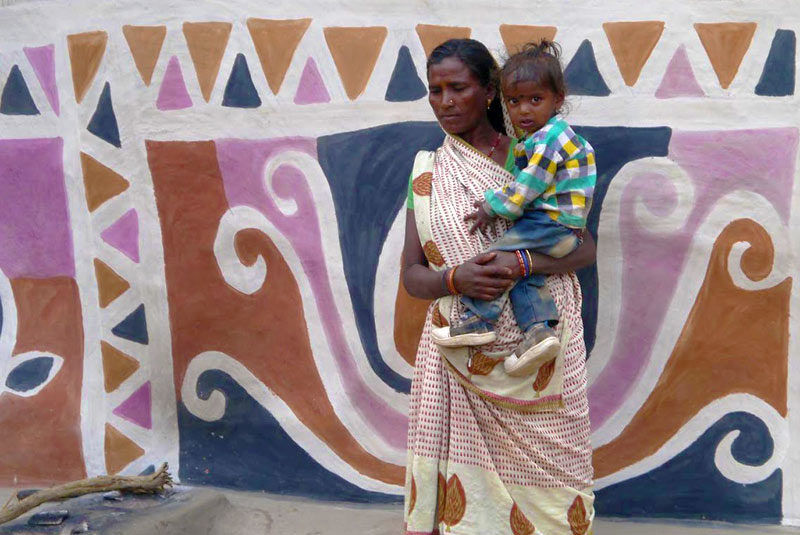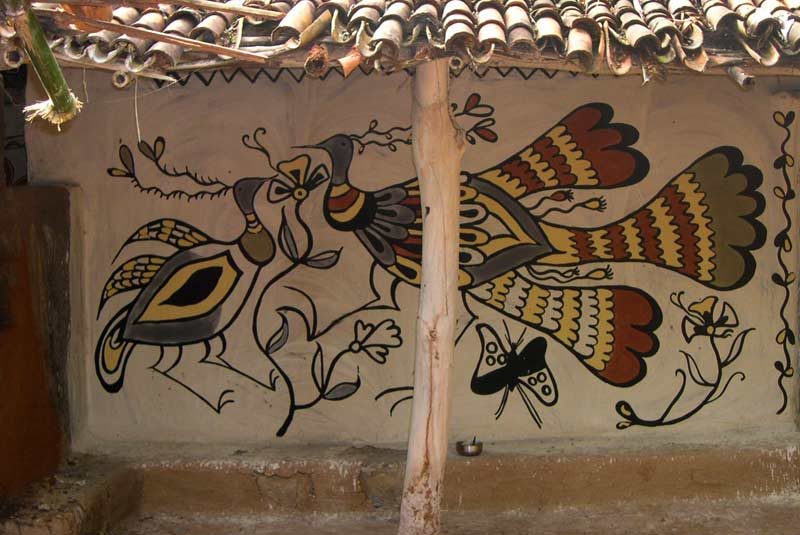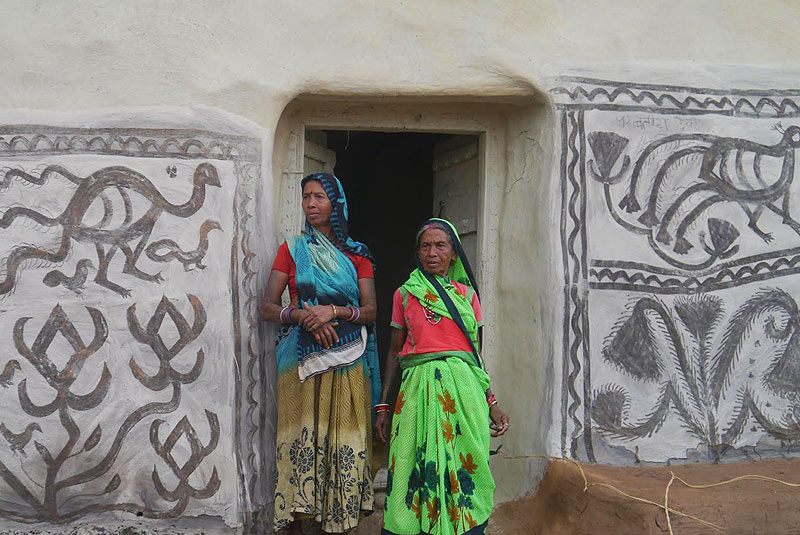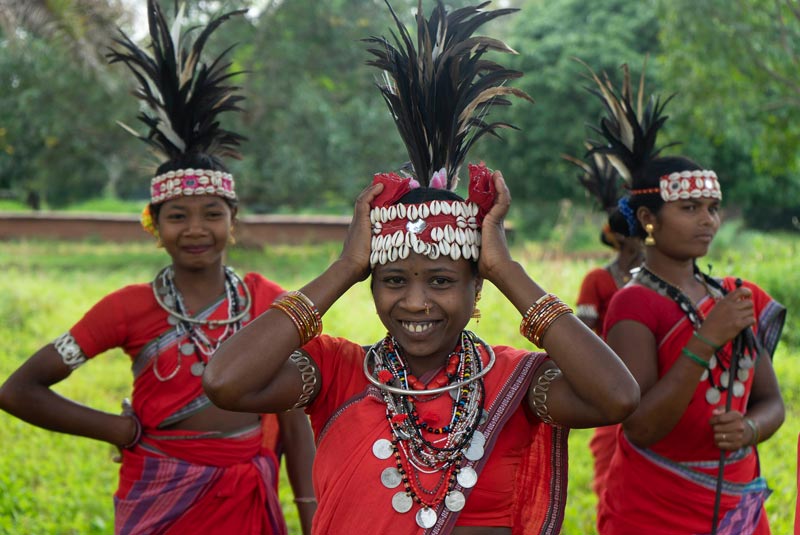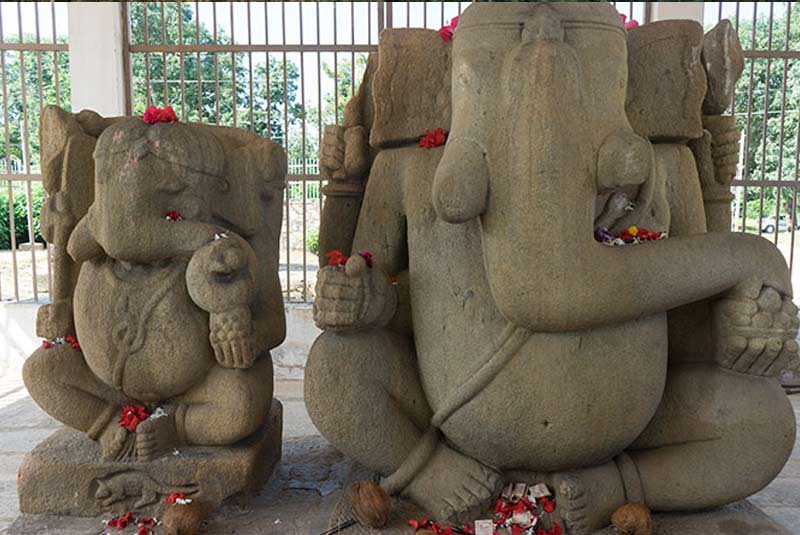Meeting the women artists of Jharkhand
Photos : Sanskriti Museum
Embark on an exciting and enriching 14-day journey to meet the Adivasi women of the Hazaribagh region. They perpetuate a tradition of extraordinarily beautiful mural paintings, believed to have originated in the region’s caves.
A Thousand-Year-Old Art in Jharkhand
Located on the Chhota Nagpur Plateau at an altitude of 610 meters, the Hazaribagh district lies in the heart of the state of Jharkhand, surrounded by dense and often unexplored forests. Within this lush nature, women of different ethnicities decorate the walls of their mud-brick houses with striking murals.
These works, called Sohrai, are created during the harvest season, around Diwali, the Indian festival of lights. Using natural pigments mixed with clay, they depict the local flora and fauna. They sometimes incorporate themes related to female sexuality, reflecting the exclusively matriarchal aspect of this art. The similarity in style and technique with the region’s rock paintings suggests that this tradition could be thousands of years old.
Preserving a Cultural Heritage
Faced with increasing urbanization, the practice of Sohrai now only survives in a handful of villages. To preserve this art, the Sanskriti Center of Hazaribagh, founded by Bulu Imam (Padma Shri), has been working to protect it since the 1980s. The center has notably developed the transcription of these paintings onto paper, thus giving new life to this heritage.
A Detour to West Bengal
Your trip will end on a high note with a foray into West Bengal. There, you will discover the art of the Chhau masks of Purulia and visit the emblematic site of Bishnupur, famous for its magnificent brick temples.
THIS TRIP INCLUDES:
- Accommodation in 3-star hotels.
- All breakfasts.
- All transportation by INNOVA AC car with a driver who speaks basic English (taxes, fuel, accommodation, and driver’s meals included).
- English-speaking cultural guide for your entire stay in Hazaribag.
- 24/7 support; we are in constant contact with you.
You may also like...
Arrival in Ranchi, capital of Jharkhand
Ranchi > Hazaribagh
*
After lunch, depart for Hazaribagh, the main destination of this trip. Arrival in the late afternoon.*
Located on one of the plateaus of Chhota Nagpur,At 600 meters above sea level, Hazaribagh is adorned with dense, still largely unexplored forests, rock formations, and lakes; The region is also home to many Adivasis (indigenous) communities.*
For the next 6 days, we will explore the Hazaribagh region with Justin Imam, the eldest son of Bulu Imam, as our guide, who, like his father, works to preserve Jharkhand's indigenous heritage. Overnight in HazaribaghDipugarha & Canary hill
*
The former buildings where the Oraon tea workers worked now house the Sanskriti Museum & Art Gallery. The Sanskriti Museum & Art Gallery was founded by Bulu Imam in 1991, after the discovery of the first rock cave at Isco in Hazaribagh district.*
The museum displays a collection of stone tools from the Paleolithic to the Neolithic periods, including pottery and Buddhist antiquities from the Hazaribagh region. It also features an exhibition of local Aboriginal crafts and textiles, as well as an art gallery with approximately 200 Khovar (wedding murals) and Sohrai (harvest murals) paintings from Hazaribagh.*
Overnight in HazaribaghJorakath
*
During the months of October and November, the women of the Kurmi community of this village repair the clay walls damaged by the monsoons by applying several coatings. Then, using comb tips, they engrave dark black patterns depicting forest animals, plants, fish, and various other symbols on the facades.*
On the way back, we will stop at a Santal Adivasi village to observe the traditional weaving of this community.*
Night in HazirabaghIsco Rockart > Barso pani > Megaliths of Barwadhi Punkree (Hazaribagh region)
*
An easy hiking trail will take us to the village of Isco, a stronghold of the Munda Adivasis. The Paleolithic cave features animal and floral motifs that are also found on the walls of the local mud houses.*
We will continue our journey along the Maudhi Range and stop at Barso Pani, a sacred water source nestled in the heart of a lush forest of Saal trees.*
Continuing our journey, we will come across the Punkree Barwadhi megaliths, which researchers consider to be a kind of prehistoric observatory. Nearby, on the summit of a small hill, are Buddhist relics dating from the Mauryan period (9th-12th century CE).*
Return at the end of the day. Overnight in HazirabaghTraditional Adivasis villages & murals Sohrai (Hazaribagh region)
*
On the way back, we will cross the Konar River at Larha to discover the Buddhist ruins of Baranpur south of Sitagarha Hill.*
Return at the end of the day, overnight stay in HazaribaghSanthal Villages & Sohrai Murals & Dhokra Art
*
Not far from there, we will meet the Santhal people in several villages to admire the Sohrai paintings, this time composed of very graphic zigzag and triangular patterns.*
After a lunch break, we will visit other villages of the Malhar ethnic group to gain insight into the tradition of Dokhra, a process of casting copper and bronze using lost-wax casting.*
Return at the end of the day, overnight stay in HazaribaghAgaria village, Sohrai paintings & Ichak temples
*
After lunch, we will explore the ancient Zamindaris' palace of Ramgarh and the Ichak Temple complex.*
Return late in the day for an overnight stay in Hazaribagh.Hazaribagh > Purulia
*
We will stay at the Matha Forest resort located at the foot of Pakhi Pahar, a hill sculpted by the artist Chitta Dey several decades ago.*
After lunch, we will depart for Charida, a picturesque red-soiled village located in the foothills of the Ayodhya Hills (10 kilometers from the resort). More than 300 Chhau mask makers work there. Overnight stay in PuruliaMatha > Purulia > Murguma > Matha
Purulia > Bishnupur
*
After lunch, we will begin visiting several temples, the most famous of which are the Ras Mancha with its pyramidal bell tower, the Shyam Rai, and the Madan Mohan.Bishnupur > Panchmura > Bikna > Bishnupur
*
First, Panchmura, a small hamlet 20 km from Bishnupur, a stronghold of terracotta artisans; 70 families make their living here from this folk art. The famous "Bankura" horse, known worldwide, is produced in Panchmura.*
We will continue to the village of Bikna, known for the art of Dokhra. We will stroll through the village's narrow streets while admiring its houses delicately decorated with ethnic motifs. Return to Bishnupur at the end of the day. Overnight in Bishnupur.Bishnupur > Kolkata
